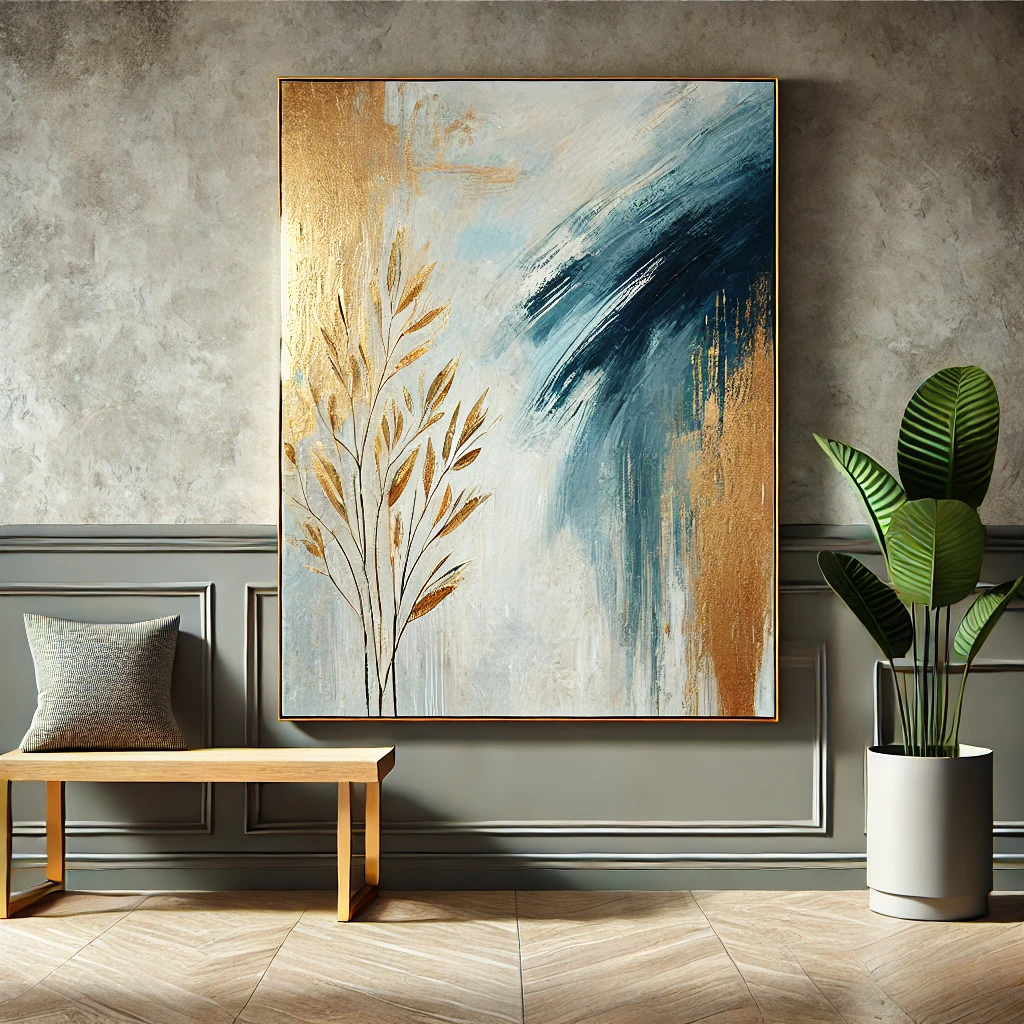Introduction
Abstract art paintings have fascinated people for over a century. Unlike traditional art that tries to depict reality, abstract art focuses on shapes, colors, and emotions. Some people love it, while others don’t understand it. But one thing is for sure—it makes you feel something!
If you’ve ever looked at an abstract painting and thought, What does this even mean?, you’re not alone. This article will help you understand abstract art paintings, their history, styles, and how you can start appreciating them.
What Is Abstract Art?
Abstract art is a form of art that does not attempt to represent real objects or people. Instead, it uses colors, shapes, and lines to create a composition that may or may not resemble anything from the real world.
Key Features of Abstract Art:
- No clear subject or realistic forms
- Focus on colors, shapes, and textures
- Emotional and expressive rather than literal
- Often open to interpretation
A Brief History of Abstract Art
Abstract art started in the early 20th century as artists began breaking away from realism. Here’s a quick timeline of how it evolved:
1. Early Influences (Late 1800s – Early 1900s)
Artists like Vincent van Gogh and Paul Cézanne experimented with colors and brushstrokes, paving the way for abstraction.
2. The Birth of Abstract Art (1910s)
- Wassily Kandinsky created some of the first purely abstract paintings.
- Piet Mondrian developed his famous grid-like, color-block paintings.
- Kazimir Malevich introduced Suprematism, focusing on geometric shapes.
3. Abstract Expressionism (1940s-1950s)
- Artists like Jackson Pollock and Mark Rothko pushed abstract art further.
- Pollock used drip painting, while Rothko created deep, emotional color fields.
4. Modern and Contemporary Abstract Art (1960s – Today)
- Artists now mix abstract art with digital media, sculpture, and street art.
- Abstract art remains one of the most popular styles today.
Types of Abstract Art Paintings
Abstract art is diverse, with many different styles and techniques. Here are some major types:
Geometric Abstraction
- Uses geometric shapes like circles, squares, and triangles.
- Example: Piet Mondrian’s “Composition II”
Expressionism & Abstract Expressionism
- Focuses on emotions and movement.
- Example: Jackson Pollock’s drip paintings
Minimalist Abstraction
- Uses simple shapes and limited colors.
- Example: Frank Stella’s striped paintings
Lyrical Abstraction
- Free-flowing, often with bright colors and curved lines.
- Example: Wassily Kandinsky’s compositions
Color Field Painting
- Large blocks of color that evoke emotions.
- Example: Mark Rothko’s deep, layered color paintings
How to Appreciate Abstract Art
Not sure how to make sense of an abstract painting? Try these tips:
1. Look at the Colors and Shapes
Instead of trying to find a subject, focus on how the colors make you feel. Are they warm and happy? Dark and mysterious?
2. Think About the Artist’s Intent
Many abstract artists create paintings to express emotions, ideas, or movement rather than specific objects.
3. Let Yourself Feel Something
Abstract art is meant to evoke an emotional response. Does the painting make you feel calm, excited, or even confused? That’s part of the experience!
4. Read About the Artwork
Sometimes, learning the artist’s background and their purpose helps you understand the piece better.
5. Give It Time
Abstract art doesn’t always make sense at first. Spend a few minutes with it and see if your perception changes.
Why People Love Abstract Art Paintings
Abstract art has a unique appeal because it allows for personal interpretation. Some reasons why people love it:
- Freedom of Expression – No rules, just emotions and creativity.
- Timeless Style – Abstract paintings fit in modern and classic homes.
- Evokes Emotion – Can bring peace, excitement, or mystery.
- Personal Connection – Each person sees something different.
Buying and Collecting Abstract Art
If you’re interested in owning an abstract art painting, here’s how to start:
Where to Buy Abstract Art:
- Art Galleries – Offers original paintings from emerging and established artists.
- Online Art Platforms – Websites like Saatchi Art and Artsy have thousands of options.
- Local Art Shows – Support local artists by purchasing unique pieces.
- DIY Abstract Art – Create your own masterpiece!
Things to Consider:
- Size & Space – Choose a painting that fits your home or office.
- Colors & Mood – Pick colors that complement your decor.
- Budget – Prices vary, from affordable prints to expensive originals.
Conclusion
Abstract art paintings are more than just splashes of color—they are a form of expression, emotion, and creativity. Whether you love the bold strokes of Jackson Pollock, the geometric precision of Mondrian, or the peaceful hues of Rothko, there’s an abstract painting for everyone.
Next time you see an abstract painting, don’t ask, What is this supposed to be? Instead, ask yourself, How does this make me feel? That’s the true magic of abstract art.
FAQs
1. What is the purpose of abstract art paintings?
Abstract art focuses on expressing emotions, ideas, and creativity rather than depicting realistic objects.
2. How can I tell if an abstract painting is good?
There’s no single answer! If it makes you feel something, it’s doing its job.
3. Is abstract art just random?
No! Many abstract artists carefully plan compositions, colors, and emotions in their work.
4. Can I make my own abstract painting?
Absolutely! Many people enjoy creating their own abstract art as a fun and therapeutic activity.
5. Where can I buy abstract art paintings?
You can find them in galleries, online marketplaces, or even create your own!
Abstract art is about personal experience. So next time you see one, just let your imagination run wild! 🎨✨
